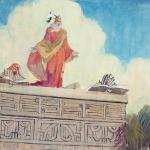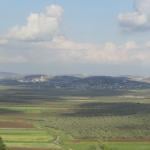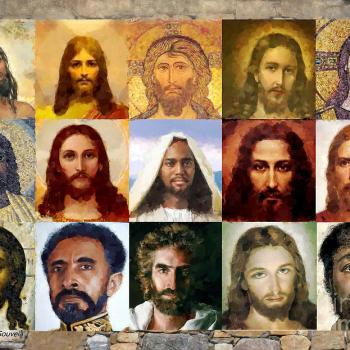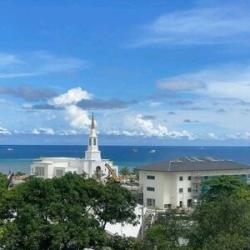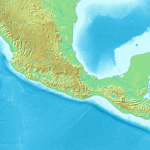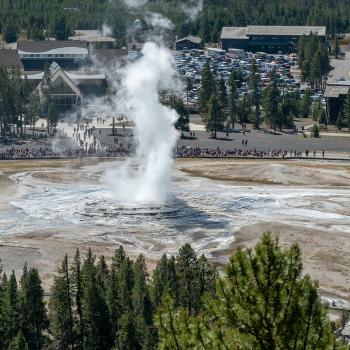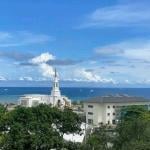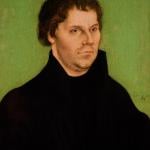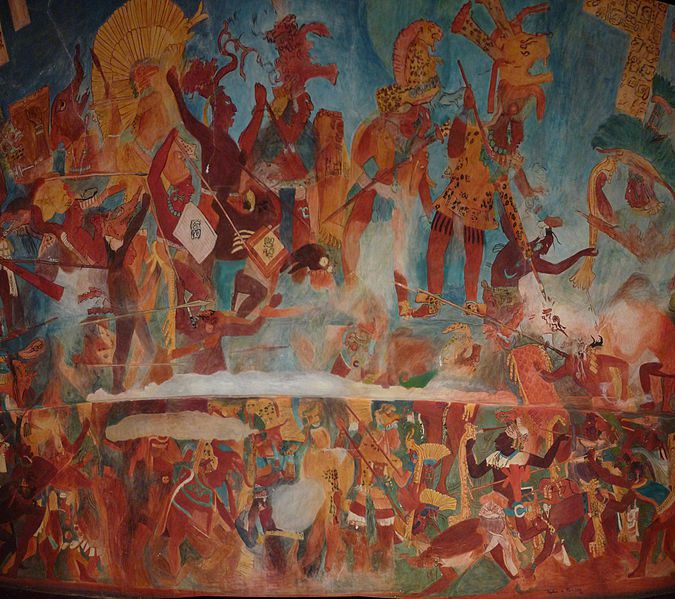
These four new items were posted today on the moribund website of the comatose Interpreter Foundation:
Anachronisms: Accidental Evidence in Book of Mormon Criticisms: Chapter 2 “Warfare in the Book of Mormon,” written by Matthew Roper
[Editor’s Note: We are pleased to present chapter 2 from a book entitled Anachronisms: Accidental Evidence in Book of Mormon Criticisms. It is presented in serialized form in this volume of Interpreter: A Journal of Latter-day Saint Faith and Scholarship.]
“Interpreting Interpreter: (Non-)Anachronisms – Warfare,” written by Kyler Rasmussen
This post is a summary of the article “Anachronisms: Accidental Evidence in Book of Mormon Criticisms — Chapter 2: Warfare in the Book of Mormon” by Matthew Roper in Volume 65 of Interpreter: A Journal of Latter-day Saint Faith and Scholarship. All of the Interpreting Interpreter articles may be seen at https://interpreterfoundation.org/category/summaries/. An introduction to the Interpreting Interpreter series is available at https://interpreterfoundation.org/interpreting-interpreter-on-abstracting-thought/.
A video introduction to this Interpreter article is now available on all of our social media channels, including on YouTube at https://youtube.com/shorts/cqkzDWVsLaE.
The Takeaway: Roper continues his examination of claimed Book of Mormon anachronisms, looking at 39 different aspects of warfare and weapons presented in the text. He concludes that 82% of these supposed anachronisms have received subsequent confirmation in the archaeological record, with only 2 items that are yet to trend toward confirmation (steel swords in the New World and Book of Mormon battle remains).
“Chiasmus in the Book of Jarom,” written by Stephen Kent Ehat
Abstract: Jarom strongly evidences the use of chiasmus to structure his short book. This paper seeks to uncover, display, and discuss the chiastic patterning of the book and hopefully suggests an enhanced understanding of the hidden beauty and deep meaning of this brief but important text. The book of Jarom indeed offers more than what may otherwise be revealed by only a cursory reading of its fifteen verses. Awareness of the chiastic pattern of the text reinforces an understanding of Jarom’s important message.
“Interpreting Interpreter: Jarom’s Chiasmus,” written by Kyler Rasmussen
This post is a summary of the article “Chiasmus in the Book of Jarom” by Stephen Kent Ehat in Volume 64 of Interpreter: A Journal of Latter-day Saint Faith and Scholarship. All of the Interpreting Interpreterarticles may be seen at https://interpreterfoundation.org/category/summaries/. An introduction to the Interpreting Interpreter series is available at https://interpreterfoundation.org/interpreting-interpreter-on-abstracting-thought/.
A video introduction to this Interpreter article is now available on all of our social media channels, including on YouTube at https://youtube.com/shorts/mN9_FT-ieeg.
The Takeaway: Ehat proposes a detailed verbal and thematic structure for the book of Jarom, with a chiasm centered on the theme of prosperity stemming from obedience to God’s commandments.
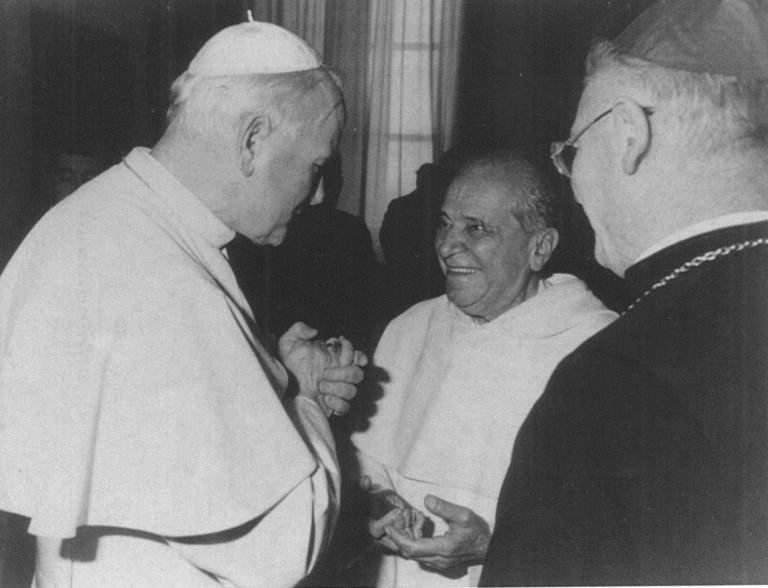
I’ve written here before about my months of individual study with the late Father Georges Anawati OP (1905-1994) of Egypt’s Institut Dominicain des Etudes Orientales.:
In the second of the above installments, I wrote about a specific experience that I had with him:
One day, while I was reading through a text with him at the Institut Dominicain des Etudes Orientales in Cairo, it suddenly hit me how wildly unlikely it was that the claims of the Church of Jesus Christ of Latter-day Saints were uniquely true. Here I was, studying the sophisticated intellectual products of one of the world’s great religions, Islam, with a Dominican priest and monk, an internationally prominent scholar, theologian, and philosopher, who, as such, was a sophisticated representative of another of the world’s great religions, Catholic Christianity. Greater Cairo alone was 15-20 times the size of the metropolitan Salt Lake City area.
Islam, as we know it, is nearly a millennium and a half old. Catholicism claims a heritage of two thousand years. By contrast, at the time that I was studying with Father Anawati, the Restoration was about a century and a half old. For most of that time, our people had been isolated in the Great Basin West, preoccupied with digging irrigation canals and building small towns in a demanding, remote, semi-arid landscape.
Provincial and few in number, we had made few if any notable contributions to world culture. Thomas Aquinas, Ibn Sina, Albertus Magnus, al-Farabi . . . No Latter-day Saint has yet managed to enter that pantheon, even today. Nor even close.
The audacity of Latter-day Saint claims seemed breathtaking.
And yet . . . And yet . . . It occurred to me almost immediately that my feelings at that moment must not be altogether different from those that an early Christian might have held at roughly the dawn of the third century. In 200 AD, Michelangelo, Dante, Augustine, Milton, Handel, Kierkegaard, and the host of other great Christian thinkers, composers, writers, and artists yet to come were still far, and sometimes very far, in the future — and, in a sense, essentially inconceivable.
The mood passed quickly. But I’ve never forgotten it. However, I don’t worry about the issue much. Have we climbed to the summit of world culture and science yet? Probably not. But good things will come, in their time.
“We will yet have Miltons and Shakespeares of our own,” predicted the future apostle Orson F. Whitney in June 1888. “God’s ammunition is not exhausted. His brightest spirits are held in reserve for the latter times. In God’s name and by his help we will build up a literature whose top shall touch heaven, though its foundations may now be low in earth. Let the smile of derision wreathe the face of scorn; let the frown of hatred darken the brow of bigotry. Small things are the seeds of great things, and, like the acorn that brings forth the oak, or the snowflake that forms the avalanche, God’s kingdom will grow, and on wings of light and power soar to the summit of its destiny.”
I was reminded of that experience with Father Anawati again yesterday, as I watched the dramatic spectacle of the announcement of a new pope. More than 100,000 people were gathered in Gian Lorenzo Bernini’s grand Piazza San Pietro, along with cameramen and commentators from CNN and the BBC and a host of other worldwide media, as the new pontiff appeared, flanked by scarlet-clad cardinals, on the central loggia of St. Peter’s Basilica. I have no idea how many scores of millions of people watched the events unfold live or have watched them repeated since then during the hours of commentary that have followed.
““Nobody does drama like the one holy Catholic and apostolic church,” said Cardinal Timothy Michael Dolan of New York, reflecting on the “electricity” in St. Peter’s Square when Pope Leo was announced as the new leader.” (CNN)
Nothing remotely like this occurs with the apostolic succession of a new president of the Church of Jesus Christ of Latter-day Saints. That act occurs with little drama or suspense and away from the gaze of the world — which pays very little attention, anyway. And yet . . . And yet . . .
I’m guessing that Peter and Paul received relatively little notice from the general public in Rome, especially compared to the Emperor Nero, their contemporary — to whom, let it be clear, except in terms of prominence, I am not comparing Leo XIV or any of the other popes of my lifetime. And yet, regarded both historically and sub specie aeternitatis, Peter and Paul were the most consequential men in Rome in the year AD 64.
Incidentally, I note this: “Church of Jesus Christ leaders offer ‘heartfelt prayers and greetings’ to Pope Leo XIV: The First Presidency responds to this ‘significant moment in time for the Catholic Church’”

A quick concluding bit of toxicity from the Christopher Hitchens Memorial “How Religion Poisons Everything” File™: “7 recent examples of the Church donating to medical needs around the world: From Cambodia to El Salvador — read how medical donations from the Church and members are blessing lives”


